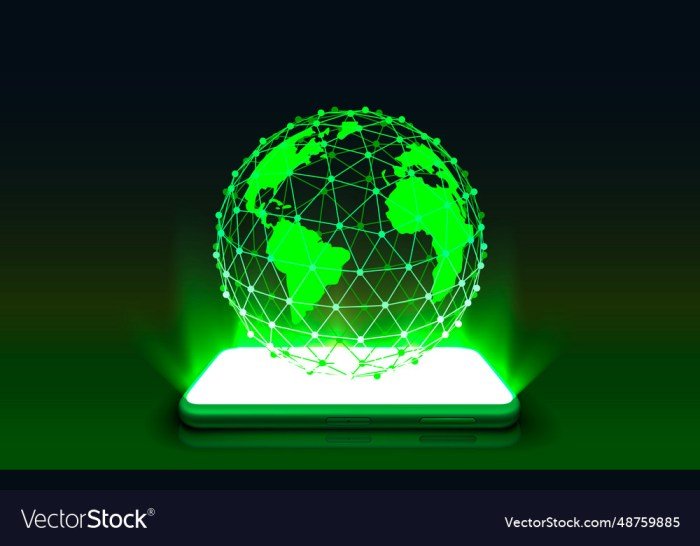Smartphone display technology has revolutionized how we interact with the digital world, transforming from simple LCDs to vibrant OLEDs. This evolution reflects a relentless pursuit of visual perfection, impacting everything from the clarity of our photos to the fluidity of our gaming experiences. Each technological leap, from LCD’s early days to the advanced AMOLED screens of today, brings with it new possibilities and challenges, shaping the smartphones we love.
Delving into the core of this technology reveals fascinating principles behind LCD, OLED, AMOLED, and MicroLED. Each type of display offers unique advantages and disadvantages, affecting power consumption, color accuracy, and viewing angles. We’ll explore the components of LCDs, the brilliance of OLEDs, and the nuanced differences between AMOLED and OLED, all while uncovering how these advancements influence everything from screen resolution and refresh rates to color accuracy and durability.
Smartphone Display Technologies: A Comprehensive Overview
The evolution of smartphone displays has been nothing short of revolutionary, transforming from basic LCD screens to the vibrant and immersive OLED displays we see today. This journey has been marked by constant innovation, driven by the desire for better image quality, improved power efficiency, and sleeker designs. This article will delve into the core principles, advantages, and disadvantages of various display technologies, providing a detailed understanding of how these screens work and what makes them unique.
Display Technologies Overview
The early days of smartphones saw the dominance of LCD (Liquid Crystal Display) technology. These displays were relatively inexpensive and offered decent image quality. However, they had limitations in terms of viewing angles, contrast ratios, and power consumption. The introduction of OLED (Organic Light-Emitting Diode) technology marked a significant leap forward. OLEDs offered superior contrast, wider viewing angles, and faster response times.
More recently, AMOLED (Active-Matrix Organic Light-Emitting Diode), a variant of OLED, has become the standard for high-end smartphones, offering even better performance and efficiency. MicroLED, a newer technology, promises to be the next evolution, with potential advantages in brightness, power efficiency, and lifespan.* LCD (Liquid Crystal Display): Uses liquid crystals that are illuminated by a backlight.
OLED (Organic Light-Emitting Diode)
Emits light directly from organic materials, eliminating the need for a backlight.
AMOLED (Active-Matrix Organic Light-Emitting Diode)
An advanced type of OLED that uses an active matrix to control individual pixels, improving efficiency and image quality.
MicroLED
Uses microscopic LEDs that emit light directly, promising even higher brightness and efficiency.
LCD Technology Deep Dive, Smartphone display technology
LCD screens consist of several key components working together to create an image. The backlight provides the light source, which passes through a layer of liquid crystals. These crystals can be manipulated by an electric field to control the amount of light that passes through. Polarizer filters are used to control the direction of light, ensuring that the image is visible.There are different types of LCDs used in smartphones, each with its own strengths and weaknesses:* TFT (Thin-Film Transistor): The most common type of LCD, offering good image quality and relatively low cost.
IPS (In-Plane Switching)
Provides wider viewing angles and more accurate color reproduction compared to TFT.
TN (Twisted Nematic)
The oldest type of LCD, known for its fast response times but with limited viewing angles and color accuracy.
| LCD Type | Strengths | Weaknesses | Typical Applications |
|---|---|---|---|
| TFT | Good image quality, Low cost | Narrower viewing angles compared to IPS | Budget smartphones |
| IPS | Wider viewing angles, Accurate colors | Slightly more expensive than TFT | Mid-range smartphones |
| TN | Fast response times, Low cost | Narrow viewing angles, Poor color accuracy | Older smartphones, some budget devices |
OLED Technology Deep Dive

Source: vectorstock.com
OLED displays work by using organic materials that emit light when an electric current is applied. Each pixel in an OLED display is self-emissive, meaning it generates its own light. This eliminates the need for a backlight, allowing for deeper blacks, higher contrast ratios, and thinner displays.The advantages of OLED over LCD are significant:* Higher Contrast Ratios: OLEDs can achieve true blacks by turning off individual pixels, resulting in superior contrast.
Faster Response Times
OLEDs have extremely fast response times, leading to less motion blur.
Wider Viewing Angles
OLED displays maintain color accuracy and contrast even when viewed from extreme angles.
Thinner and More Flexible Designs
OLEDs can be made thinner and more flexible than LCDs, enabling curved and foldable displays.However, OLED technology also faces some challenges:* Burn-in: Prolonged display of static elements can cause image retention, or “burn-in.”
Cost
OLED displays are generally more expensive to manufacture than LCDs.- Lifespan: OLED displays have a shorter lifespan than some LCDs, although this is improving.
Closing Summary: Smartphone Display Technology
From the humble beginnings of LCD screens to the futuristic promise of MicroLED, the evolution of smartphone display technology has been nothing short of remarkable. We’ve explored the core technologies, dissected the nuances of resolution and refresh rates, and examined the crucial aspects of color accuracy and durability. As we look ahead, the future holds exciting possibilities with innovations like under-display cameras and foldable displays, continuing to redefine how we experience the digital world, ensuring that our smartphones become even more immersive and visually stunning devices.
